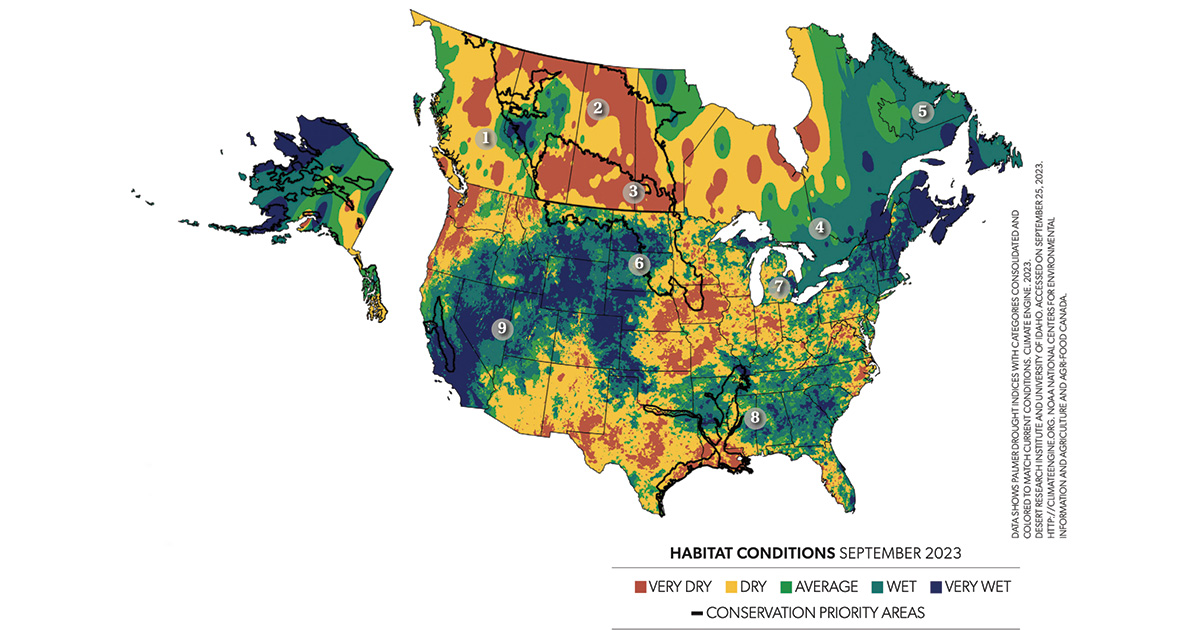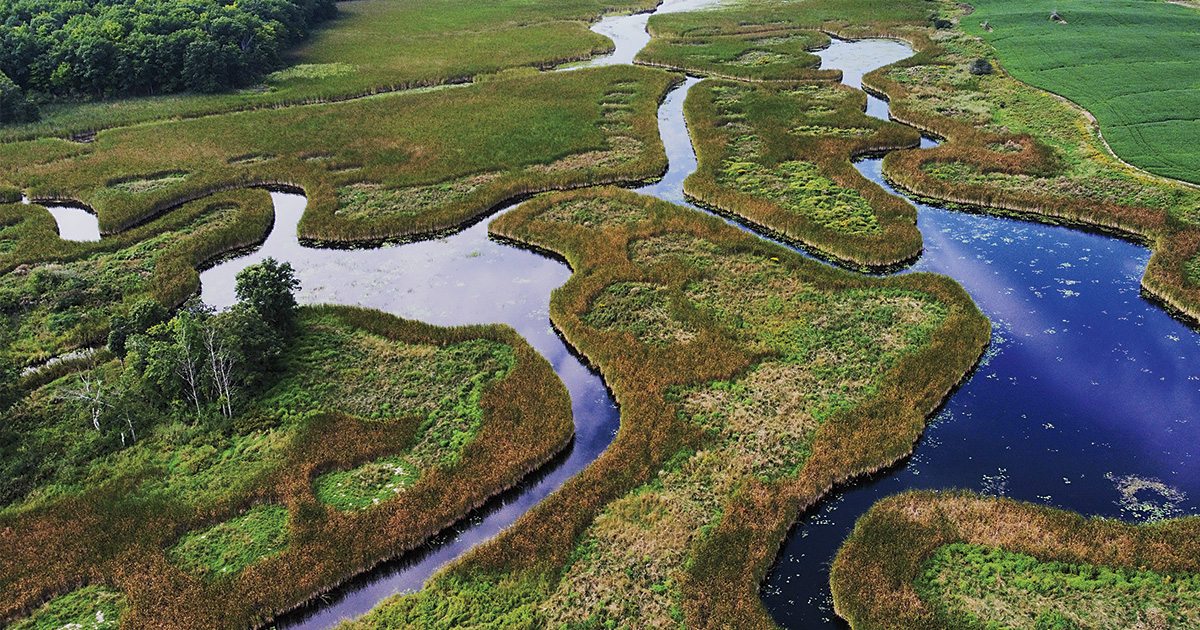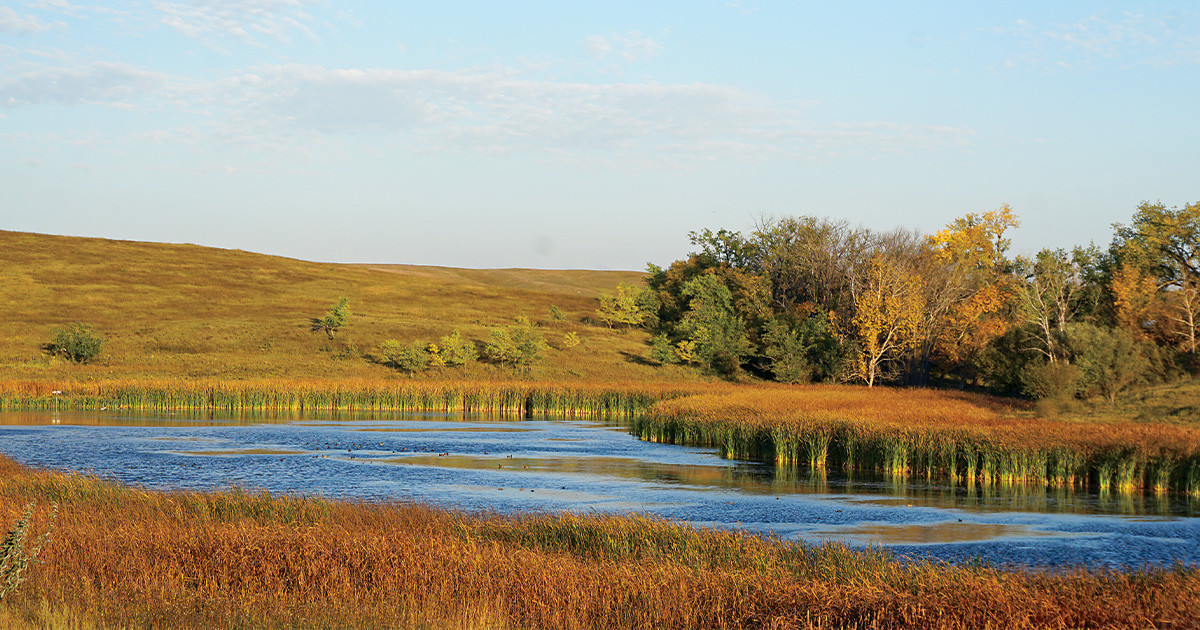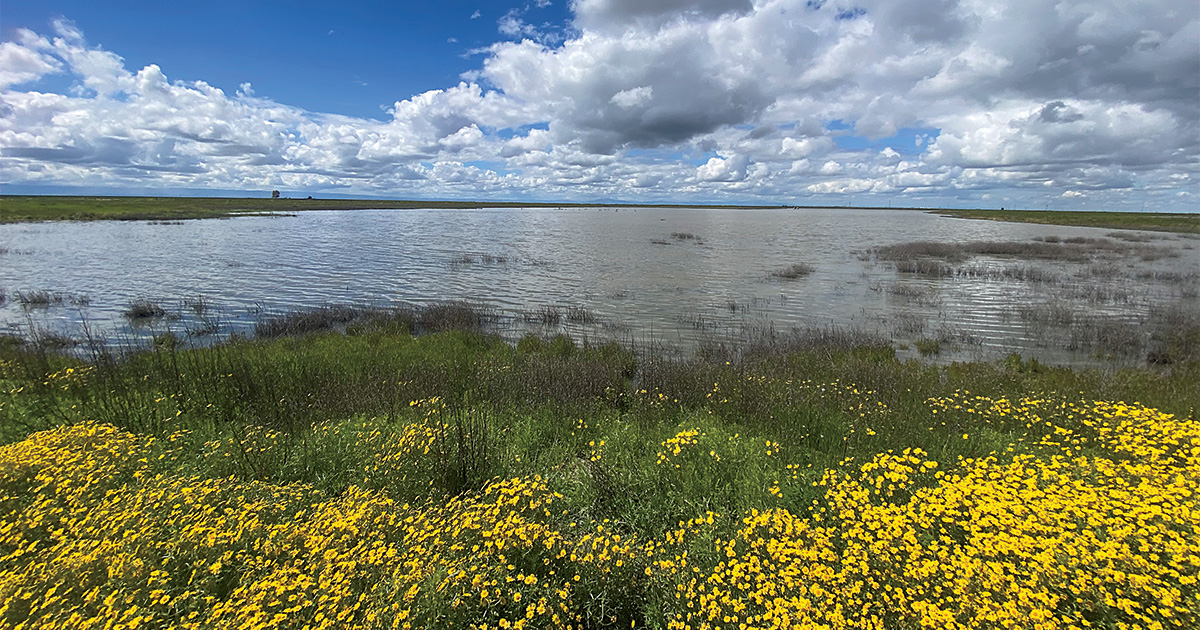Field Reports: 2023 Fall Habitat Outlook
An overview of wetland conditions on key migration and wintering areas
An overview of wetland conditions on key migration and wintering areas
By DU Field Biologist

Most of British Columbia suffered drought conditions from late summer through early fall, depleting water levels in many wetlands and fueling extensive wildfires. At the end of September, the migration was in full swing in northern portions of the province, with large numbers of waterfowl concentrating on available wetland habitats.
Weather and habitat conditions were highly variable across this vast region this summer. Extreme drought conditions persisted in the Yellowknife area, which suffered devastating wildfires. In the Yukon, most wetlands received enough precipitation to remain full through the breeding period.
Following a hot and dry summer, wetland conditions were poor across much of Prairie Canada in early fall.
Drought continued to grip the landscape across much of Prairie Canada in early fall. Southern Alberta was in the worst shape, with the southeast experiencing a one-in-50-year drought. Saskatchewan and Manitoba wetlands have fared slightly better, with some semipermanent basins holding water in areas where summer precipitation fell. In early October, the fall migration was gaining momentum across the Canadian prairies, and large numbers of ducks, geese, and sandhill cranes were gathering on available wetlands.
Much of Ontario and Quebec received above-average rainfall in August and early September. Wetlands of all types benefited, and higher water levels in the Great Lakes will provide good staging conditions for migrating waterfowl. Large flights of blue- and green-winged teal were observed in southern Ontario in mid-September.

Wetlands across Ontario and Quebec will provide good habitat for migrating waterfowl.
Following an exceptionally wet late summer, water levels are well above average in wetlands across this region, providing excellent staging habitat for local and northern-nesting birds. The wet growing season may lead to unusual staging behavior among waterfowl, depending on the status of the harvest and availability of waste grain in agricultural fields.
Late-summer wetland conditions varied across the US Great Plains, with North Dakota, northern South Dakota, and northeastern Montana receiving adequate rainfall to maintain many habitats. Wetland conditions deteriorated in southern South Dakota and Minnesota due to unusually hot, dry weather. Good waterfowl production was expected in areas with favorable nesting and brood-rearing conditions. In drier areas, lower water levels fostered the growth of emergent vegetation, which will provide improved habitat next spring if there is sufficient moisture to flood wetland basins. In late September, waterfowl were staging on large wetlands, and early migrants were beginning to move south.

Late-summer rains helped wetlands in North Dakota, northeastern Montana, and northern South Dakota.
Unusually dry conditions and areas of severe drought continue to plague the US Great Lakes region, especially in Wisconsin, Illinois, Indiana, and northwest Michigan. The northeastern United States has fared better, with only small pockets of unusually dry to moderate drought persisting in portions of New York, Pennsylvania, and New Jersey. A heavy dose of fall precipitation is needed to improve habitat conditions for migrating waterfowl in these areas.
Extreme drought persisted across much of Texas and Louisiana in late September, and only areas with irrigation capabilities had water during the early teal season. Similarly hot, dry conditions prevailed across the Mississippi Alluvial Valley, and rainfall over the next few months will largely determine the quality of waterfowl habitat this winter. The South Atlantic region has also been drier than average, but wetland conditions remain in good shape overall and should provide productive habitat for migrating and wintering waterfowl.

Habitat conditions have dramatically improved in California's Central Valley following several years of drought.
With drought easing across much of the West, fall habitat conditions for waterfowl are looking up. In the Great Salt Lake, water levels have risen nearly four feet and have flooded many of the lake’s wetlands that were dry last year. Good water supplies in the Central Valley should result in normal amounts of managed wetlands and flooded rice fields. Unfortunately, the Lower Klamath and Tule Lake National Wildlife Refuges are still well short of their water needs, and only dry-land hunting will be allowed there this fall.